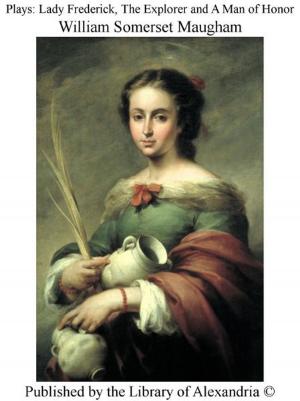| Author: | Hippolyte Adolphe Taine | ISBN: | 9781465610232 |
| Publisher: | Library of Alexandria | Publication: | March 8, 2015 |
| Imprint: | Language: | English |
| Author: | Hippolyte Adolphe Taine |
| ISBN: | 9781465610232 |
| Publisher: | Library of Alexandria |
| Publication: | March 8, 2015 |
| Imprint: | |
| Language: | English |
This is the first whole to which we must refer a work of art. And here is the second. The artist himself, considered in connection with his productions, is not isolated; he also belongs to a whole, one greater than himself, comprising the school or family of artists of the time and country to which he belongs. For example, around Shakespeare, who, at the first glance, seems to be a marvellous celestial gift coming like an aerolite from heaven, we find several dramatists of a high order—Webster, Ford, Massinger, Marlowe, Ben Jonson, Beaumont and Fletcher—all of whom wrote in the same style and in the same spirit as he did. There are the same characters in their dramas as in Shakespeare's, the same violent and terrible characters, the same murderous and unforeseen occurrences, the same sudden and frenzied passions, the same irregular, capricious, turgid, magnificent style, the same exquisite poetic feeling for rural life and landscape, and the same delicate, tender, affectionate ideals of woman. In a similar way Rubens is to be judged. Rubens apparently stands alone, without either predecessor or successor. On going to Belgium, however, and visiting the churches of Ghent, Brussels, Bruges, or Antwerp, you find a group of painters with genius resembling his. First, there is Crayer, in his day considered a rival; Seghers, Van Oost, Everdingen, Van Thulden, Quellin, Hondthorst, and others, with whom you are familiar, Jordaens, Van Dyck—all conceiving painting in the same spirit, and with many distinctive features, all preserving a family likeness. Like Rubens, these artists delighted in painting ruddy and healthy flesh, the rich and quivering palpitation of life, the fresh and sensuous pulp which is diffused so richly over the surface of the living being, the real, and often brutal types, the transport and abandonment of unfettered action, the splendid lustrous and embroidered draperies, the varying hues of silk and purple, and the display of shifting and waving folds. At the present day they seem to be obscured by the glory of their great contemporary; but it is not the less true that to comprehend him it is necessary to study him amidst this cluster of brilliants of which he is the brightest gem—this family of artists, of which he is the most illustrious representative.
This is the first whole to which we must refer a work of art. And here is the second. The artist himself, considered in connection with his productions, is not isolated; he also belongs to a whole, one greater than himself, comprising the school or family of artists of the time and country to which he belongs. For example, around Shakespeare, who, at the first glance, seems to be a marvellous celestial gift coming like an aerolite from heaven, we find several dramatists of a high order—Webster, Ford, Massinger, Marlowe, Ben Jonson, Beaumont and Fletcher—all of whom wrote in the same style and in the same spirit as he did. There are the same characters in their dramas as in Shakespeare's, the same violent and terrible characters, the same murderous and unforeseen occurrences, the same sudden and frenzied passions, the same irregular, capricious, turgid, magnificent style, the same exquisite poetic feeling for rural life and landscape, and the same delicate, tender, affectionate ideals of woman. In a similar way Rubens is to be judged. Rubens apparently stands alone, without either predecessor or successor. On going to Belgium, however, and visiting the churches of Ghent, Brussels, Bruges, or Antwerp, you find a group of painters with genius resembling his. First, there is Crayer, in his day considered a rival; Seghers, Van Oost, Everdingen, Van Thulden, Quellin, Hondthorst, and others, with whom you are familiar, Jordaens, Van Dyck—all conceiving painting in the same spirit, and with many distinctive features, all preserving a family likeness. Like Rubens, these artists delighted in painting ruddy and healthy flesh, the rich and quivering palpitation of life, the fresh and sensuous pulp which is diffused so richly over the surface of the living being, the real, and often brutal types, the transport and abandonment of unfettered action, the splendid lustrous and embroidered draperies, the varying hues of silk and purple, and the display of shifting and waving folds. At the present day they seem to be obscured by the glory of their great contemporary; but it is not the less true that to comprehend him it is necessary to study him amidst this cluster of brilliants of which he is the brightest gem—this family of artists, of which he is the most illustrious representative.















